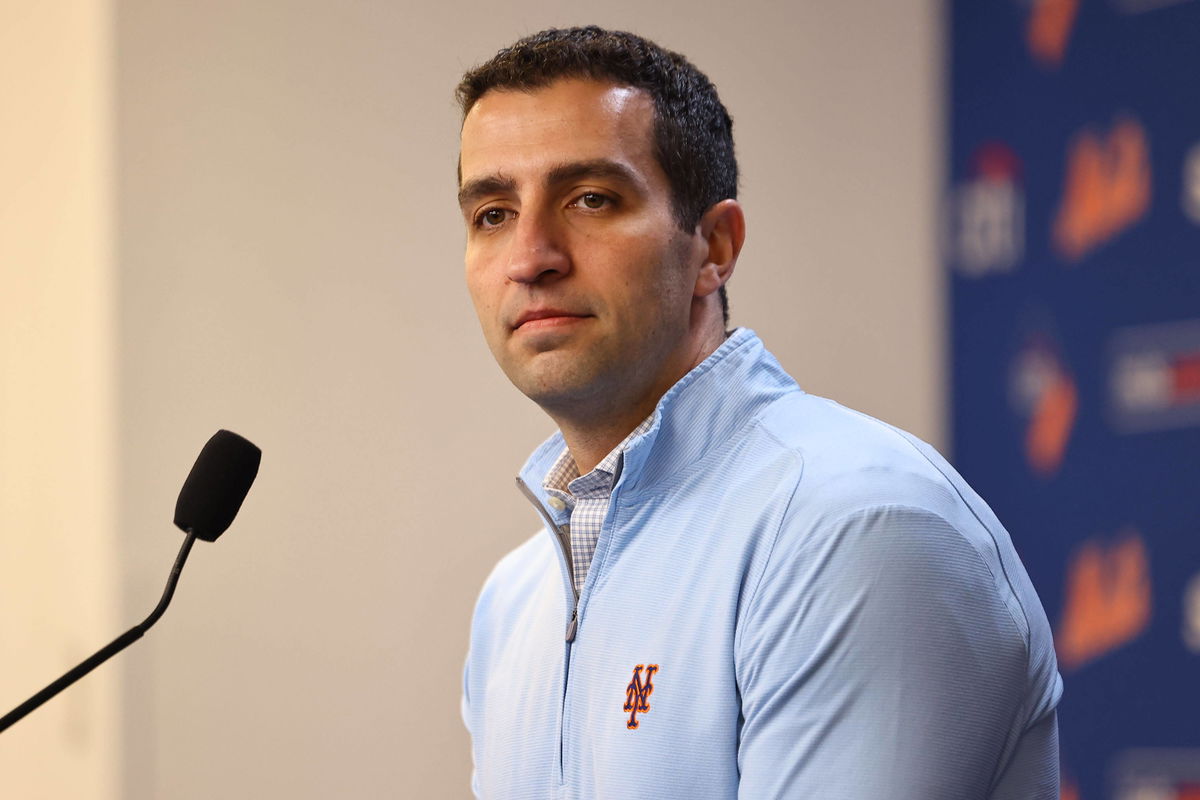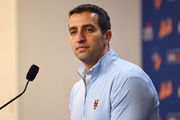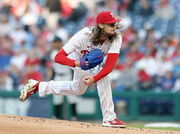
Imago
Credit: IMAGO

Imago
Credit: IMAGO
The New York Mets have all the leverage. At 60-44, they lead the National League East and are engaged in a tight race with the Philadelphia Phillies, now half a game behind. The team emerged from that 3-13 stretch much stronger and more capable earlier in the season. Being in first has made it easy to declare them flat-out buyers as the July 31 trade deadline approaches. Their aim is no longer just reaching the playoffs; it is constructing a roster for a deep October run.
Watch What’s Trending Now!
As the trade deadline approached, Mets President of Baseball Operations David Stearns left no doubt where he and his club stood on a major move for the starting rotation. While acknowledging the struggle, he affirmed the team’s ambition. “I think if you’re going to add to the team in general, you try to raise the ceiling of the team,” Stearns told the reporters. “Acquiring starting pitching at this time of year is pretty difficult. I don’t know how many ‘raise the ceiling’ type of players are going to be traded, but if those guys are available, we’ll be involved.”
David Stearns was asked if the Mets could make a “major acquisition” to the starting rotation at the trade deadline
“I don’t know how many ‘raise the ceiling’-type players are going to be traded. If those guys are available, we’ll be involved” pic.twitter.com/M11imzu4ST
— SNY (@SNYtv) July 26, 2025
ADVERTISEMENT
On the surface, the Mets’ rotation is their strength, led by the spectacular Kodai Senga (1.78 ERA) and the steady David Peterson (2.90 ERA). However, this foundation is fragile. Senga and Sean Manaea are both still building their pitch counts since coming back from injuries. Meanwhile, converted reliever Clay Holmes has already thrown a career-high number of innings (108.2 IP). That instability has put a heavy burden on the team’s relief corps, and the question of how to get dependable, long innings from its rotation remains a matter of importance for the front office to address.
There are a few elite possibilities on the trade market for this need. Pittsburgh’s Mitch Keller is a durable ace (125.0 IP) under a team-friendly deal through 2028, which would seem to be a primary target. The Miami Marlins have two intriguing arms in Edward Cabrera (3.48 ERA), young and under control through 2028, and former Cy Young winner Sandy Alcantara (6.98 ERA), but a high-risk reclamation project with a big contract ($17.3 million ’25, $17.3 million ’26, and $21 million option ’27). These are the actual “ceiling-raising” players that Stearns referenced.
Beyond the elite tier, there may also be good starters available at a lower price. Former Cy Young runner-up Dylan Cease is a pending free agent (0.5 years), as are veterans Merrill Kelly (Rental; $7 million option expires after ’25) and ex-Met Seth Lugo (Rental; Expected to decline $15 million player option). Though those are likely rentals, either could give the team valuable innings for a playoff run. Given how underwhelming Arizona’s Zac Gallen (5.58 ERA) has been, the thought also presents a fascinating buy-low opportunity for a team willing to gamble on a return to form.
ADVERTISEMENT
While the rotation draws headlines, Stearns and the Mets have kept their eyes on the prize and are addressing the team’s most obvious weaknesses first.
ADVERTISEMENT
Addressing the Mets’ real priorities
The biggest need for the Mets is obviously in the bullpen. The bullpen has been overtaxed and ravaged by season-ending injuries to key left-handers A.J. Minter and Danny Young. As a result, the bullpen collectively owns a 3.80 ERA that sits near the bottom line (21st) of the league. Apart from how to use dominant closer Edwin Díaz, manager Carlos Mendoza has had few reliable choices, prompting him to overuse arms like Huascar Brazobán and Reed Garrett.
Stearns himself hasn’t left any doubt as to his primary aim, having already secured southpaw Gregory Soto from the Orioles to give his staff some depth. “As we said all along, the bullpen is the priority and probably remains that way,” Stearns said outright. He said the team isn’t finished addressing the bullpen, saying, “We’re still talking. There’s still the ability to upgrade our bullpen. We’re certainly not going to close the door on it.”
Top Stories
Boston Pressures Craig Breslow to Strike Back as Blue Jays Launch Bold Alex Bregman Push, Per Insider

“Do Something” — Yankees Veteran Puts Brian Cashman on Notice as Call Grows to Chase Bo Bichette After $75M Miss

Detroit Left Fuming After Justyn-Henry Malloy Forced to Make Way for $19M Acquisition

Orioles to Spoil Another Mets Plan as David Stearns Risks Losing $168M Star After Pete Alonso Heartbreak: Insider

2 Royals Star Face Trade Chopping Block After Matt Strahm Signing Restricts Kansas City

The Mets’ other area of possible growth is depth in the lineup. The Mets are deep in power hitters, but production from the bottom of the order has been inconsistent. Center fielder Tyrone Taylor, for example, is batting only .209 this season. And though Jeff McNeil has provided a solid bat, he splits his time between the outfield and infield. It leaves a potential hole in the lineup on any given night.
ADVERTISEMENT
Despite these numbers, Stearns expressed a measured confidence in his current roster, suggesting a major offensive acquisition is unlikely. “I’m comfortable with the setup we have right now,” he said about his outfielders. He acknowledged that the team will still look for upgrades but noted the bar is high. “I don’t think we need to [add a bat],” Stearns concluded. “We have the offensive players who can help us score a lot of runs and turn the lineup over.”
In the end, the Mets’ trade-deadline plan boils down to a single word: pitching. With the bullpen being the obvious need, Stearns is checking all the boxes in an attempt to acquire sturdy relievers. He even suggested a creative in-house option if the trade market became too expensive. He would think about promoting top prospects Blade Tidwell, Brandon Sproat, and Nolan McLean to come up and throw out of the bullpen. A tactic that could offer some instant assistance without sacrificing the future.
ADVERTISEMENT
ADVERTISEMENT
ADVERTISEMENT
ADVERTISEMENT

